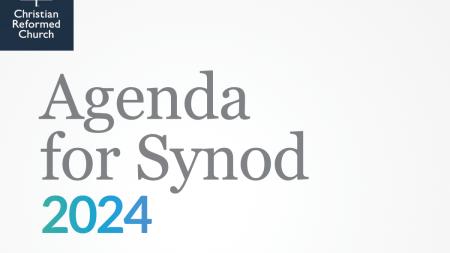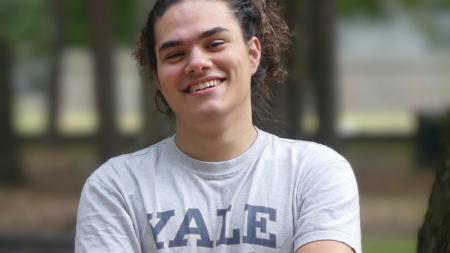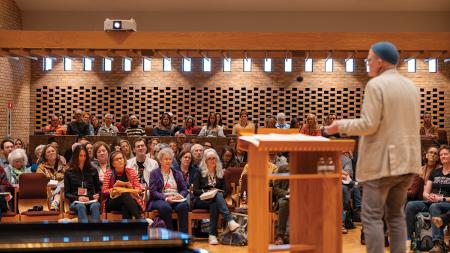Working to Stop Human Trafficking

What comes to mind when you think of human trafficking? Is it an image of a young girl being pulled into a white cargo van and forced into prostitution? In reality, that is not an accurate picture of typical human trafficking.
On March 12 and 13, Calvin University will be hosting two events that can help people sort out fact from fiction in human trafficking today.
On March 12 at 7 p.m. a panel of experts will gather for an informative conversation as they discuss “The Hidden Epidemic: Human Trafficking.” And on March 13 (9 a.m.–12 noon) a second event will focus on “Human Trafficking: The Multiple Roles for Social Workers.”
It turns out that the image described above, about a young girl being kidnapped, actually has more in common with the “White Slavery Scare” of the early 20th century than the realities of human trafficking today.Over 100 years ago, newspapers often warned of young white girls being kidnapped at big-city train stations and forced into prostitution after leaving their parents’ rural home. This scare tactic and others like it, which scholars now call the “White Slavery Scare,” represented broad public hysteria about changes in society related to immigration, racial integration, and women’s independence while ignoring real ongoing violence that was being perpetrated against communities of color.
We recognize the deeprootedness of this oppressive policy in our nation’s history. Even as the thirteenth amendment to the U.S. Constitution formally abolished slavery, the trafficking of Asian women across the Pacific Ocean to the western U.S. continued to expand. In The White Devil's Daughters, author Julia Flynn Siler, for example, documents horrific live auctions of Chinese women that took place on waterfront docks in San Francisco.
Human trafficking today continues to prey on our society’s dehumanizing historic policies, lingering racism, and implicit bias. The portrayal of “real” or “innocent” victims who need rescue is a distraction from the complex social issues related to human trafficking: immigration, poverty, and trauma, to name a few.
A victim of trafficking is actually more likely to know, trust, and depend on their trafficker than to be a stranger to them. They are more likely to be caught in a complex web of debt, fear, and desperation than to be bound by chains.
We need to raise awareness about the facts of human trafficking.
We need to learn how to identify victim-survivors in our communities.
We need to hold traffickers accountable.
We need to create pathways for victim-survivors to find a route out of their trafficking situations and into a better life.
Fortunately, some of this work is already occurring in some of our communities.
In 2018 Calvin University researchers conducted a study looking at the demand for illicit massage businesses (a common venue for human trafficking) and found the illicit massage industry in the greater Grand Rapids, Mich., area to be an estimated $6 million annual economy. An undocumented immigrant from Laos working at a massage parlor is thus a more likely face of human trafficking in Grand Rapids than a young girl kidnapped at a mall.
So how might we eliminate human trafficking?
We cannot focus only on the victims, we must identify those who benefit from it—the traffickers, the business owners, the buyers—and hold them accountable. Currently, it is more likely for a victim of human trafficking to be criminalized for prostitution or illegal immigration status than it is for a trafficker to be criminalized for trafficking.
We must also recognize that victimhood is not a chosen or desired status. Many victims of human trafficking do not self-identify as victims. They are doing what they need to do in order to survive. We must learn the warning signs of human trafficking in order to identify victims.
To learn more about how to take action, check out these events planned for March 12-13 at Calvin University, highlighting the importance of all sectors of our communities working together to fight against human trafficking.


